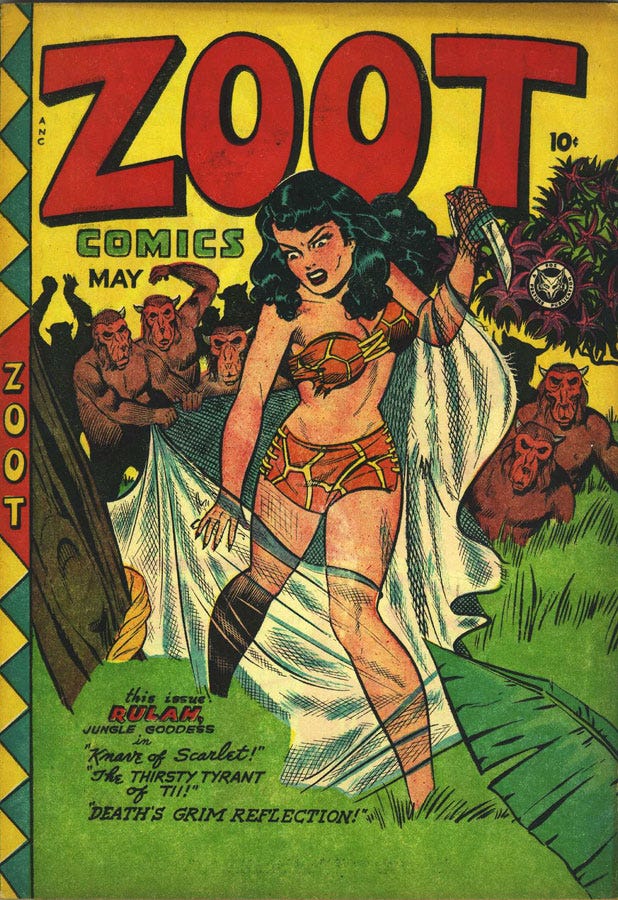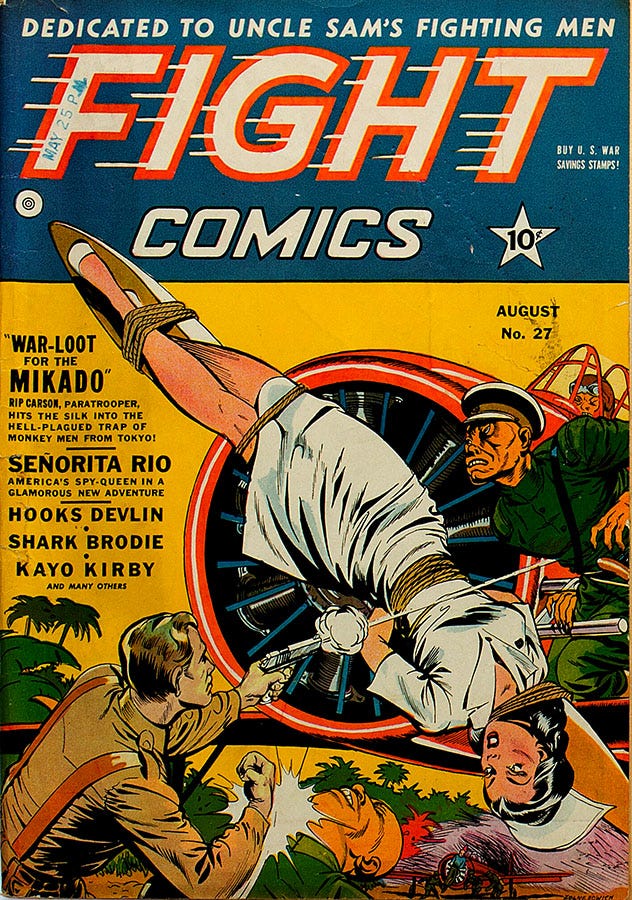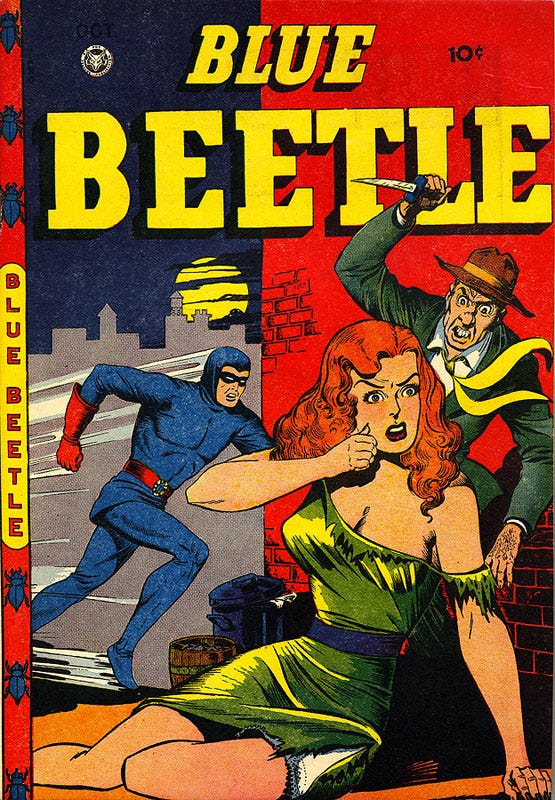Negative Behavior Manifestations
Comic books act as a trauma or the precipitating circumstance in nightmares
One of the most significant and deeply resented manifestations of race prejudice in the mores of the United States is the fact that in books, movies and magazines photographs of white women with bared breasts are taboo, while the same pictures of colored girls are permitted. Comic books for children make this same distinction.
One such specimen had half-nude girls in all kinds of suggestive positions. Other pictures show typical whipping and flagellation scenes such as are found, outside of this children's literature, only in pornographic books. When the girls are white, there is always some covering of the breasts. Only colored girls have their breasts fully exposed.
This is a demonstration of race prejudice for children, driven home by the appeal to sexual instincts. It is probably one of the most sinister methods of suggesting that races are fundamentally different with regard to moral values, and that one is inferior to the other. This is where a psychiatric question becomes a social one.
Zoot Comics #14 (16th issue)
(Fox Features Syndicate, May 1948)
art by Matt Baker (?)
War comics, in which war is just another setting for comic-book violence, are widely read by soldiers at the front and by children at home. It seems dubious whether this is good for the morale of soldiers; it certainly is not good for the morality of children. Against the background of regular-featured blonde Americans, the people of Asia are depicted in comic books as cruelly grimacing and toothy creatures, often of an unnatural yellow color.
Fight Comics #27 (Fiction House, 1943). Cover illustrated by Dan Zolnerowich.
False stereotypes of race prejudice exist also in the "love comics." Children can usually pick the unsatisfactory lover just by his looks.
In addition to their effect on children's ethical growth, their character development and their social maturation, comic books are a factor in a host of negative behavior manifestations:
dreams and daydreams
games
nightmares
general attitudes
reactions to women
attitudes towards teachers
interactions with younger children
and so on
Comic books act clearly as a trauma or the precipitating circumstance in nightmares and other sleep disorders. I have observed this in many cases. Nightmares occur in children under very different circumstances, of course. Often, they are more or less harmless; sometimes they are premonitory signs of more serious developments. A seven-and-a-half-year-old boy was brought to the clinic with a complaint of nightmares. He told his parents he could not remember what had frightened him. Psychological examinations had uncovered nothing. Later, routine questions about comic books elicited merely that he read Donald Duck and Mickey Mouse and liked them. When I saw him alone, I told him a little about what nightmares are, and that grownups have them too. And that if one remembers what they are about one has more chance not to have them anymore.
"Don't you remember the least little bit of any of them?" I asked him.
"You know," the boy said, "what I really like is the Blue Beetle [a figure in a very violent crime comic book]. I read that many times. That's what I dreamed about. I don't have it at home; I get it at another boy's house."
"Who is the Blue Beetle?"
"He is like Superman. He is a beetle, but he changes into Superman and afterwards he changes into a beetle again. When he's Superman he knocks them out. Superman knocks them out with his fist. They fall down on the floor."
"If you say it is like Superman, how do you know it is?"
"I read the Superman stories. He catches them. Superman knocks the guys out."
Blue Beetle #49
(Fox Features Syndicate, 1947)
art by Jack Kamen
It is not difficult to understand that a child stimulated to fantasies about violent and sadistic adventures and about a man who changes into an insect gets frightened. Kafka for the kiddies!
[NOTE: The Golden Age Blue Beetle could NOT change into an insect. But something LIKE that would come along much later.]
The recent output of horror comic books, a refined or rather debased form of crime comics, is especially apt to interfere with children's sleep. In a typical specimen a man-eating shark changes into a girl. You are shown the gruesome picture of an arm bitten off by the shark with blood flowing from the severed stump. And the moral ending?
"No one would ever believe . . . that the ghost of a lovely girl could inhabit a shark's body..."
All kinds of monstrous creatures inhabit these comic books. They have in common that their chief pastime seems to be to kill people, eat them or drink their blood. A boy of eight read many comics during the day without any ill effect being apparent to his family. But after a while he demanded that after dark, his comic books be securely locked away. He insisted on this every night because, he said, "I am afraid that these horrible creatures would come out and attack me in the night."





